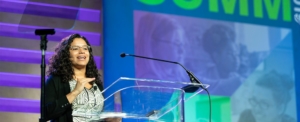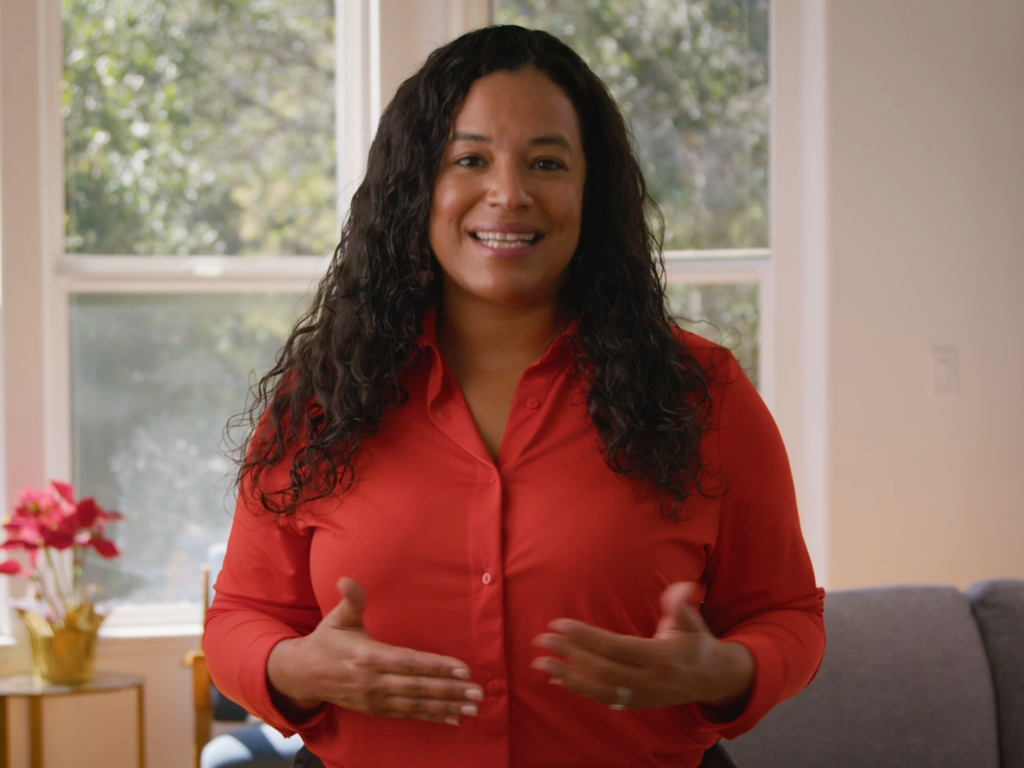This blog was originally published by EdSurge on Mar. 29, 2021 and can be found on their website here.
Diverse Leaders are Changing Education
By Frances Messano | Mar. 29, 2021

I was 20 years old and wearing my best suit. I woke up early so I could make the one-hour trip to Midtown Manhattan to begin my Wall Street internship orientation. The Sponsors for Educational Opportunity team planned an intense training. We learned Excel modeling, financial terms, and networking. The goal was to leave the summer with an employment offer in hand. I knew we would be joining investment banks as one of the few or only people of color on our teams. It wasn’t likely that we would be given a warm reception. Yet, I craved opportunity—a chance—and I inhaled the guidance shared throughout the experience to increase my likelihood of success.
The most powerful lesson I learned during this time was, “It’s not about me.” My internship opportunity was the direct result of the trailblazers who came before me—men and women of color who fought hard to create a path where there had been none. My task was to succeed that summer so that many more people who shared my background could have similar opportunities. This was too much pressure for any college student to carry. But I embraced the mission: lead by example, lift while you climb, and honor those who came before you. I learned about the power of the collective.
Now, 20 years later, I am reminded of the power of the collective once again.
I’ve had a range of roles during my six years at NewSchools Venture Fund, a non-profit venture philanthropy that finds, funds and supports education innovators with powerful ideas focused on creating a more just and equitable education system. I created our Diverse Leaders strategy, led our Innovative Schools team and designed our annual Summits. The scope of my role steadily increased over time, and my love for the work did too. There is nothing more exciting than providing dream capital to leaders of color, while making a positive difference for students across the country. Working at NewSchools enabled me to unite my personal story, passion and purpose in my work.
And while a lot of the work I’ve been doing won’t change, there is so much more to do. At NewSchools we believe we must create a different, more equitable future for our young people. To meet this unprecedented moment we are living through, our team recently updated our investing strategy with a focus on innovative public schools, new learning solutions, diverse leaders and racial equity. We want to be a different kind of funder, one that is diverse in leadership, focused on the future and working in trusted partnership with innovators across education. We know we must create better outcomes for kids and ensure that brilliant leaders of color are able to lead us into a brighter future. As President, I’ll be leading this charge.
Stacey Childress, our CEO, and I had long discussed the possibility of creating a new president role to oversee all of our investment areas. I was energized by the opportunity. But, I was also worried. It wasn’t imposter syndrome. I had been doing much of the work already. The position was new, but my leadership wasn’t. Instead, I worried about the impact that being a Latina, first-generation college graduate, daughter of an immigrant raised in the working-class community of Coney Island, Brooklyn would have on the organization. Would our funding decline? Would my perspective be dismissed? Maybe I would be ok in the number two role… but what if I were CEO? I felt that despite “proving” that I could make it in corporate America, at Harvard Business School and in the day-to-day at NewSchools, that the racism in our field would hold me back. There have been funders who have asked Stacey to tell me to stop pushing so hard, to back down. My fear was that our powerful mission, the amazing innovators and our passionate team would suffer because of me.
My promotion to President was announced on January 26. I reached out to a group of friends and influencers to amplify my announcement. It felt strange and self-serving to ask people to share my news. But I also remembered all the times when others asked me to do the same for them, without questioning it. I now understand how much it matters. That day my inbox and social media feeds were inundated with love and support from those I asked and many more I didn’t. I heard from innovators who have trusted me with their dreams, friends and mentors who were cheering me on, and incredible leaders of color who fight for educational equity every day, reminding me that they have my back. Of the dozens of beautiful messages that came my way, here’s one that says so much:
“When I saw your announcement, I was like shit yes!! This is exactly what we need to see. It sent shock waves through the community… Because of what’s been going on, it hasn’t felt like these roles were accessible to us… When that announcement went out, we all felt like we got promoted. It means so much to us that you are trying to do this work in another way. Continue to lead with integrity, excellence and with authenticity.”
Validation really matters for rising leaders, and it matters even more for leaders of color. Because of systemic racism, the deck is stacked against us; the risk of failure is greater and the ability to bounce back is harder. This is why we must work hard to create more equitable organizations. We must develop succession plans that provide leaders of color with the support they need, along with opportunities to grow and develop. This is especially important in education given the impact of diverse leaders. When Black students are taught by Black teachers, they experience higher achievement scores, lower suspension and expulsion rates, and are more likely to aspire to attend a four-year college. Teachers of color have lower turnover rates when they share the same race as their principal. Diversity is a strategic lever for change. (This is why networks like Education Leaders of Color started in the first place.)
Leaders of color are rising and we need to be conscious about how we help each other grow. The week after our nation elected the first Black and South Asian female Vice President, not only did I receive a promotion, but Darryl Cobb, Michelle Vilchez and Jean-Claude Brizard were named to top leadership roles in incredible education organizations. And I see more leaders of color getting the opportunity to lead every day. But there is still so much more to do.
The hundreds of messages I received reminded me, I am not alone. Throughout this humbling and exciting moment, I kept on thinking, What if we brought this powerful collective together to truly drive change in a moment that needs it most? What could be possible if we channeled all of this passion, leadership and energy for good?
A new generation of leaders of color are ready to serve. We will work differently than those who came before us. We won’t accept the same barriers and limitations that have existed in the past. And we will help more people of color get into decision-making roles across the field, because it’s not about us as individuals. It is about the students of color and low-income students in communities across the country, who are seeking opportunity just as we did. They, too, are getting ready to put on their best suit and head downtown (or whatever the young people are wearing these days and whatever that looks like in our new Zoom reality). If we get this right, it won’t just be their clothes that look different than mine did. Their boss might too.


